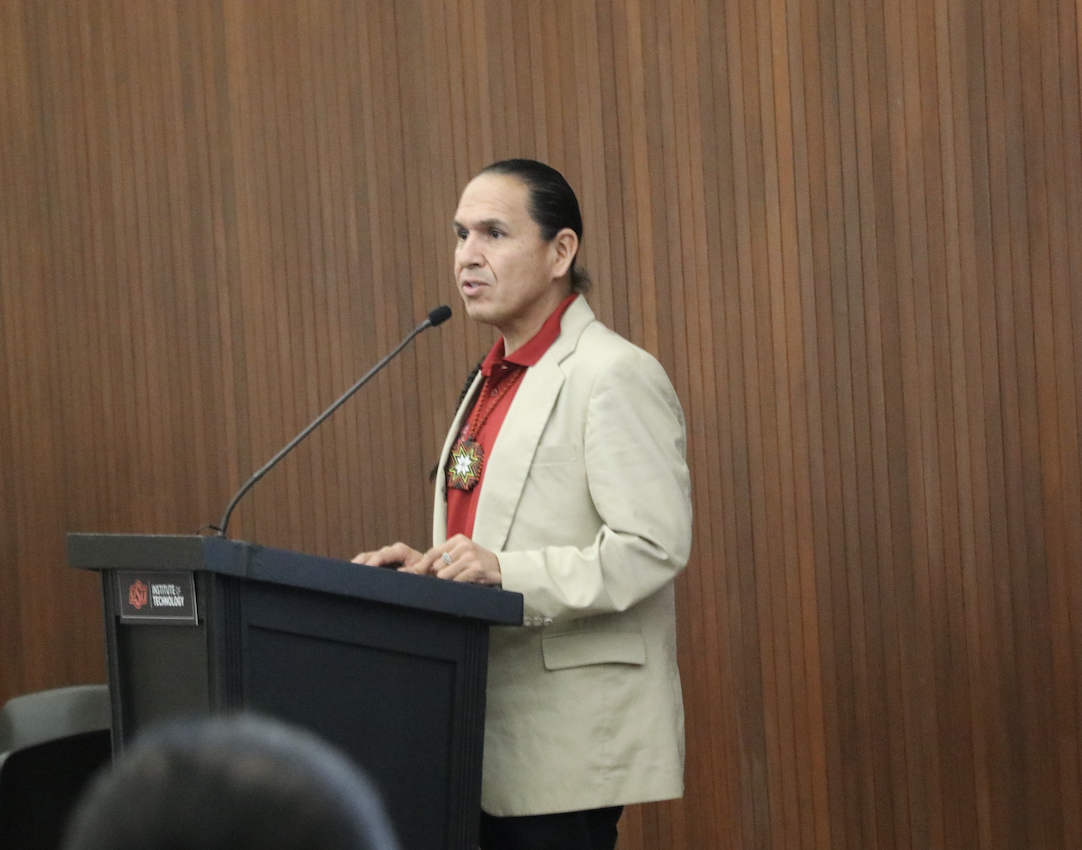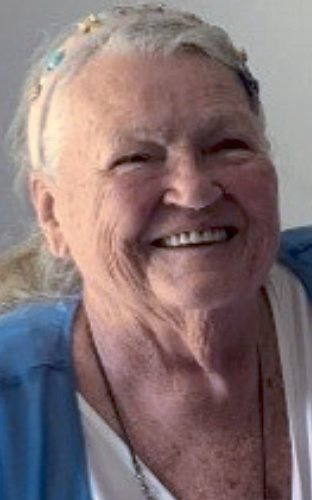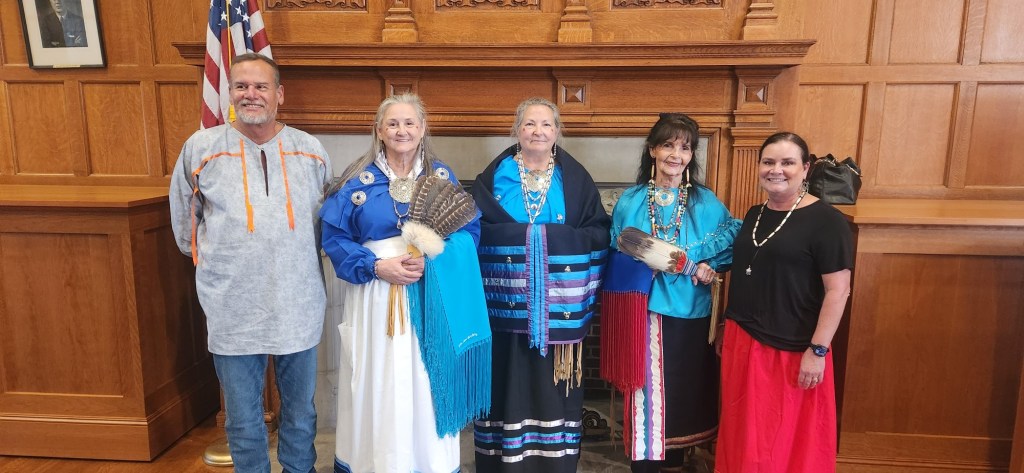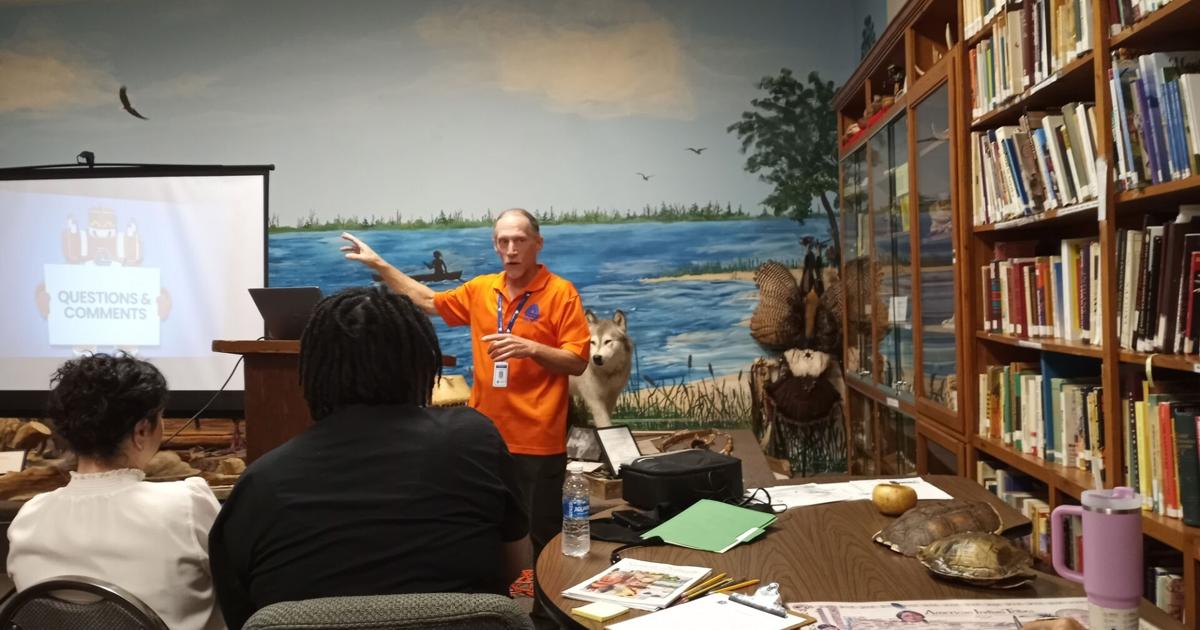OKMULGEE – An Oklahoma Power Up Symposium at Oklahoma State University- Institute of Technology in Okmulgee highlighted the tribal energy workforce. The Nov. 5 event was organized by 7Skyline, an energy development consulting firm. The symposium focused on tribal renewable energy development and workforce development for renewable energy within tribal enterprises. The event provided helpful information for tribal communities through resources, knowledge, and connection for tribal communities.
“We strongly believe that this event will serve as a catalyst for strengthening Tribal energy sovereignty and expanding opportunities for renewable energy across Oklahoma Tribal Nations,” said 7Skyline Tax and Project Manager Sheiyenne Seegmiller (Navajo).
The event featured MCN speakers and tribal leaders, and many tribal workforce energy teams: including MCN Second Chief Del Beaver, MCN Secretary of the Nation Zechariah Harjo, Caddo Nation Chairman Bobby Gonzalez, and Portland State Dean of Engineering Dr. Joseph Bull (Delaware Tribe of Indians).
OSU-IT Tribal Outreach and Workforce Program Specialist Brandon Dinsmore (Cherokee) worked with 7Skyline to organize the event at OSU-IT. “The people that are helping us with this are 7Skyline, they’re a renewable energy consultant. They’ve done some of these elsewhere in the country,” shared Dinsmore.
Dinsmore pointed out that all the participants have a passion about environmental stewardship, of taking care of the land, and climate change. That passion is what initially brought everyone together through natural conversations, which eventually led to the symposium.
“The idea is that we provide as much information as possible for tribes that might be considering renewable energy or that might have some questions and don’t know what to ask, but it’s also a great change for us to showcase what the tribes are doing, not just in Oklahoma but across the country.”
Representatives from the Red Cloud Renewable Energy Center in Oglala South Dakota attended the…






 A Golden Eagle feather held by a Native American Lenape or member the Delaware Tribe of Oklahoma. (BILL RETTEW/MEDIANEWS GROUP)
A Golden Eagle feather held by a Native American Lenape or member the Delaware Tribe of Oklahoma. (BILL RETTEW/MEDIANEWS GROUP)  A beautiful hand-made outfit worn by the Lenape of Oklahoma. (BILL RETTEW/MEDIANEWS GROUP)
A beautiful hand-made outfit worn by the Lenape of Oklahoma. (BILL RETTEW/MEDIANEWS GROUP)  The Lenape of Oklahoma wearing a traditional outfit at West Chester University. (BILL RETTEW/MEDIANEWS GROUP)
The Lenape of Oklahoma wearing a traditional outfit at West Chester University. (BILL RETTEW/MEDIANEWS GROUP) 



 Installation view of Indigenous Identities: Here, Now & Always at the Zimmerli Art Museum. Photo Credit: McKay Imaging Photography
Installation view of Indigenous Identities: Here, Now & Always at the Zimmerli Art Museum. Photo Credit: McKay Imaging Photography